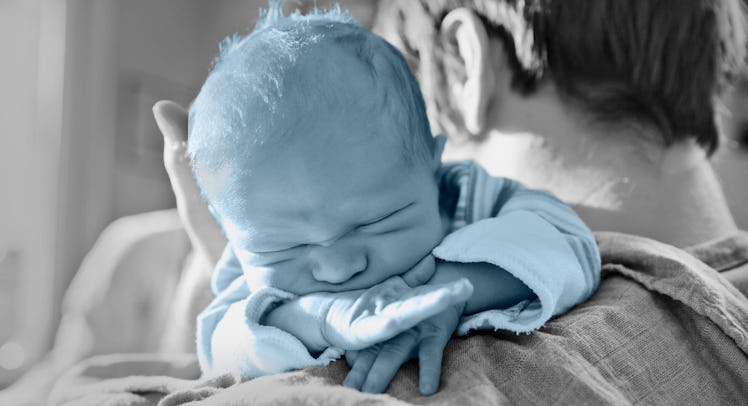How to Burp a Burpless Baby
Since all babies swallow air, all babies burp to some degree. How to make it happen is a matter of what works best.

Babies are naturally inefficient eaters. As they gulp down milk, they swallow air. That air then makes them uncomfortable or fools them into thinking they’re full when they aren’t. And since they won’t develop the ability to burp themselves and impress the relatives for at least four months, parents need to give them a hand. As parents get to know their baby better, they tend to recognize when their child needs to be burped. The kid may cry or become restless, or turn their head away from the bottle completely. The amount of milk or formula a baby needs changes as they grow, so these cues are often a better indicator than simply tracking consumption.
“Newborns are super gassy,” explains Dr. Kristin Bencik-Boudreau, a pediatrician and assistant clinical professor at the Children’s Hospital of Wisconsin. “The best way to help them deal with it is to burp them halfway through feeding. If they are nursing, do one side, burp them and then do the other side. If using a bottle, stop halfway through the feed, burp them and continue on.”
Breastfed babies tend to require less burping than their bottle-fed counterparts, since they swallow less air, and certain types of bottles may reduce the amount of air a baby swallows, so it might be worth the effort to try a few different kinds. All babies are different, and parents need to observe their own baby’s needs.
“It’s okay if you don’t always get a burp – the kids are going to pass the gas one way or the other,” says Bencik-Boudreau. “If they seem fussy I would keep trying, but if they are pretty content and you can’t get a burp, it’s okay to put them down.”
There are three common methods of burping. Which one is right for a baby is a matter of trial and error, but if parents are more confident doing one style over the other – and it works – there’s no need to reinvent the wheel:
The Classic (Over the Shoulder)
This is the classic style of burping, one used by a hundred sitcom dads out of their depth. Parents should place a cloth over their shoulder (since babies tend to bring up a little milk or formula with their burps). They hold the baby against their chest, with the baby’s head resting on their shoulder, on the cloth. It’s okay to use the mirror to check head placement – that baby needs to be supported and able to breathe easily. With the other hand, pat or rub the baby’s back until that trapped air is released in a (frequently gooey) belch. Wipe the baby’s face, remembering to support the head and neck, and then resume feeding if necessary. BAM. Instant TV dad.
Sitting on the Lap
Some parents find that sitting the child on their lap gives them more control and comfort. With the cloth on their lap (or a bib on their baby), parents sit the baby on their lap facing away from them, using one hand to support the chest and their thumb and index and middle fingers to gently cradle the chin and head. Lean the baby forward and pat or rub the baby’s back until they burp.
Lying Down on the Lap
Parents should place the cloth on their lap, and lay the baby face down, perpendicular to their thighs, and gently support their jaw at a comfortable height – not too high, not too low. Rub or pat the baby’s back, until the baby belches. If the baby falls asleep, that burp probably isn’t necessary.
Parent’s should tap firmly enough to move some air bubbles around, so soft pats, like the kind used to awkwardly console a weeping coworker, won’t cut it. On the other hand, the baby shouldn’t be uncomfortable. No pounding is necessary. And if no burp comes, it’s not the end of the world. Babies don’t need to be in a recovery position. It just might require changing the sheets more frequently.
This article was originally published on